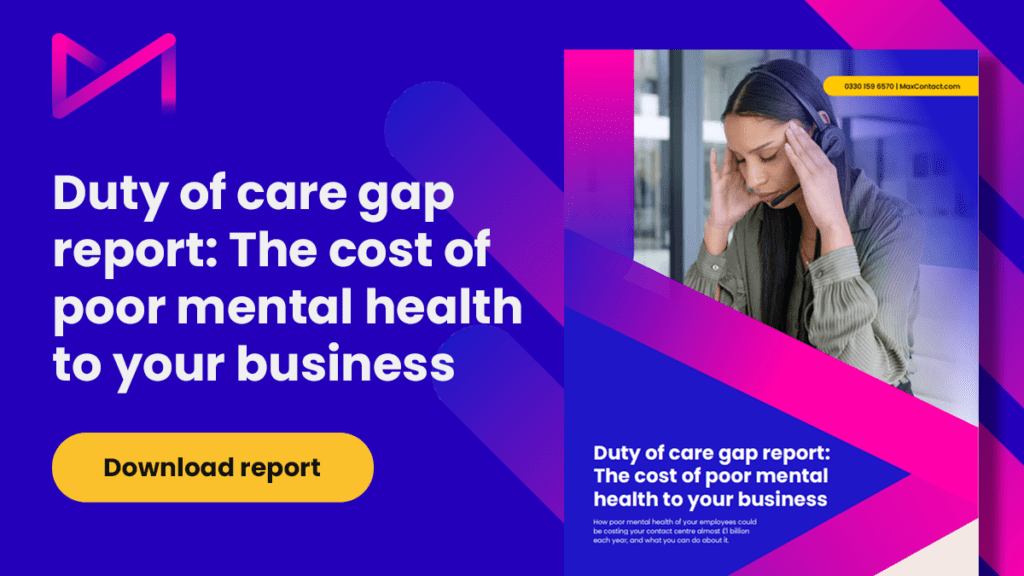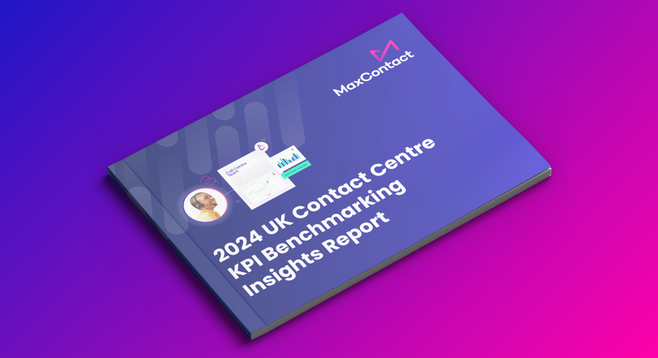In this guest blog, Thrive: Mental Wellbeing share insights about workplace wellbeing, stress factors affecting contact centre workers and how to build a sustainable and effective wellbeing strategy in your business.
Thrive: Mental Wellbeing is a leading mental healthcare service for organisations across the UK. Their award-winning app provides digital therapy and mental health support at the touch of a button. Their aim is to create a world where people are empowered to take control of their mental wellbeing and can learn to Thrive, not survive.
—
Over recent years, organisations have started to think more holistically about developing a wellbeing strategy to enable them to adapt to challenges in the workplace but also and perhaps, more importantly, to ensure they are providing the right support to their employees.
This development began in earnest, in 2017 when Heads Together, a mental health initiative led by The Royal Foundation of The Duke and Duchess of Cambridge, sponsored the London Marathon, leading to an increase in awareness and normalising the conversation around mental health. Since the global pandemic in 2020, there has been an even bigger shift. Due to the challenges we collectively experienced, more people discussed and continue to discuss mental health, just as they would their physical health.
This has led to a more progressive approach and focused consideration on mental health and wellbeing, particularly in the workplace. Due to the growth in remote and hybrid working and increased flexibility at work, there’s been a necessity to place more responsibility and emphasis on mental health for both employers and employees.
One sector who have long needed change for the benefit of employee wellbeing is contact centres. According to a recent study by MaxContact, 95% of contact centre agents say work-related mental wellbeing problems are making them less productive. This is costing the industry nearly £1bn in lost productivity every year.

Just some of the key factors that can affect contact centre workers’ mental health on a daily basis are – dealing with customer frustration, feeling undervalued and overwhelmed, 24/7 ‘always on’ culture, and monotonous work tasks – to name but a few. All of these can lead to emotional exhaustion and burnout, which in turn, affects contact centre absence and attrition rates.
So what can be done to improve wellbeing in contact centres?
With mental health, there’s no one-size-fits-all approach, but by starting with a robust and well thought through wellbeing strategy you’ll be on the right track. This, coupled with having measurable goals and initiatives in place will help to see how things are working or might need tweaking. The strategy needs to be personalised to your industry, workplace and workforce to ensure tangible impact and results.
Organisations have a responsibility to their employees to ensure their workplace is as best equipped as possible in terms of preventing work-related stress and that conditions aren’t exacerbated or prolonged and that employees have access to the most suitable resources to support them appropriately.
There are 6 key steps you should take to begin this strategic approach –
- Start your plan – Consider your organisation’s goals and ensure your mental wellbeing strategy is aligned with the business’ mission and vision.
- Needs analysis – Analyse current mental health data – absenteeism rates and reasons, employee surveys and reports/claims are a good place to start.
- Plan development – Engage with key stakeholders across the business and create a mental health action plan. Consider the best ways to communicate and roll this out across the business.
- Change & measurement – Monitor, review and improve.
- Interventions & training – Review your resources and consider your proactive (eg stress awareness training) and reactive (eg support or treatment for unwell employees) interventions and training.
- Process evaluation – Collect data, monitor and adjust strategy.
To further understand how to build a sustainable and effective strategy for your organisation, you can download Thrive: Mental Wellbeing’s guide to developing a sustainable wellbeing strategy, here.





